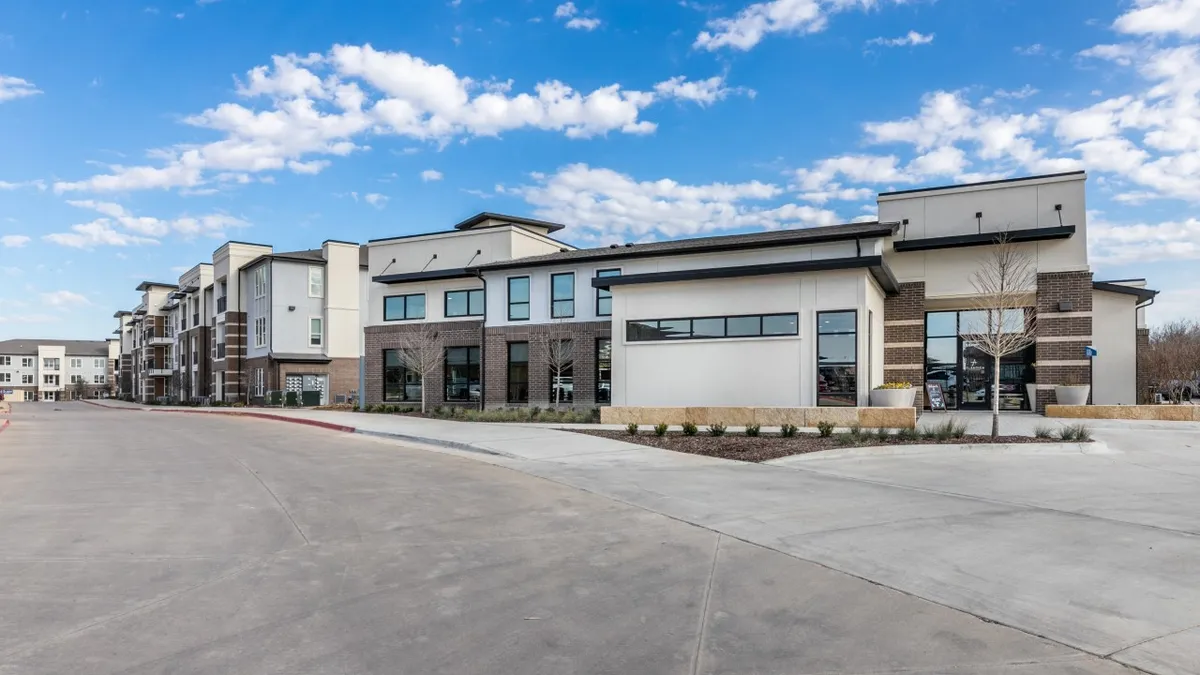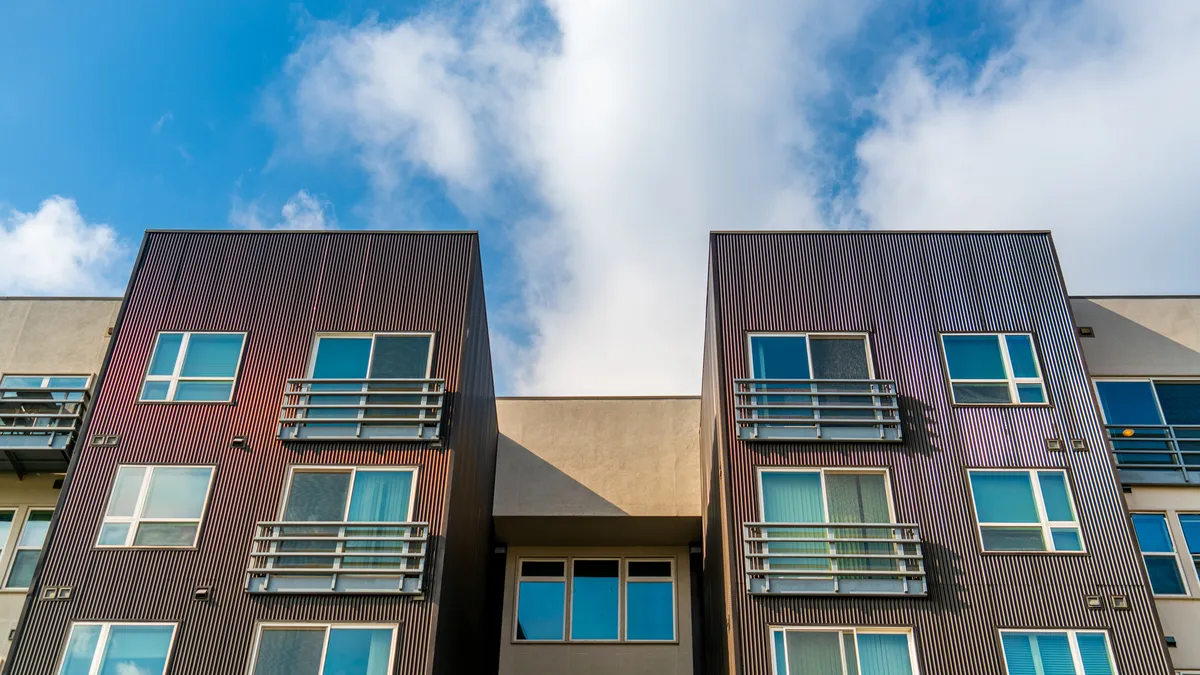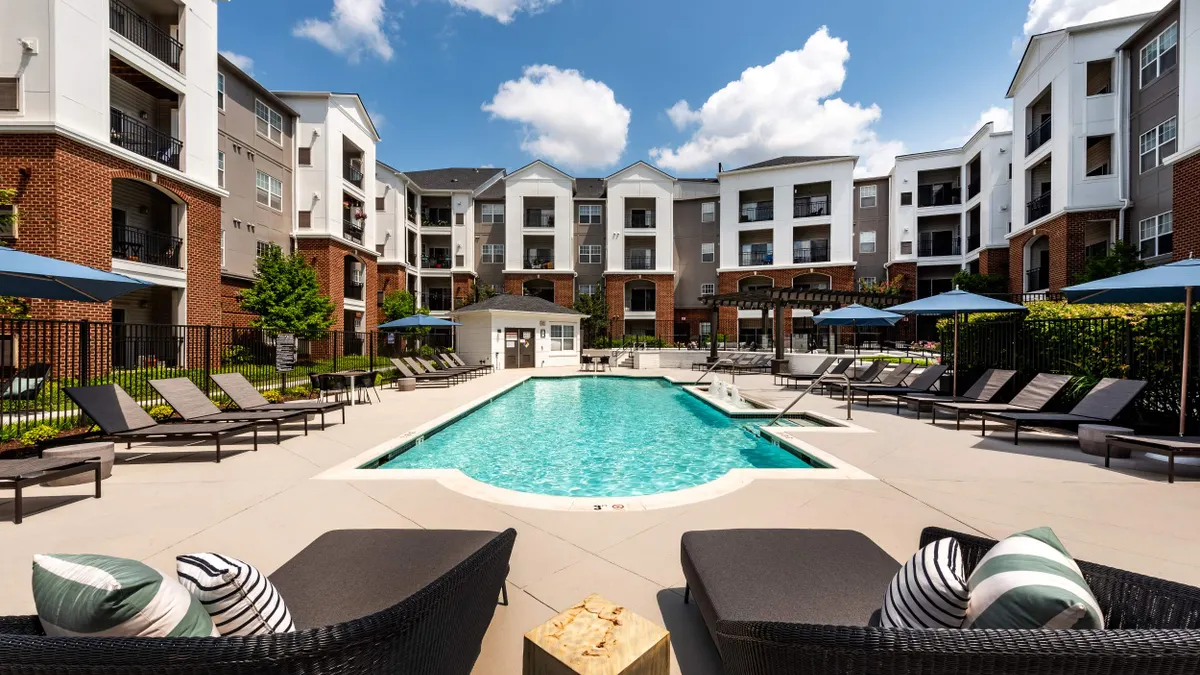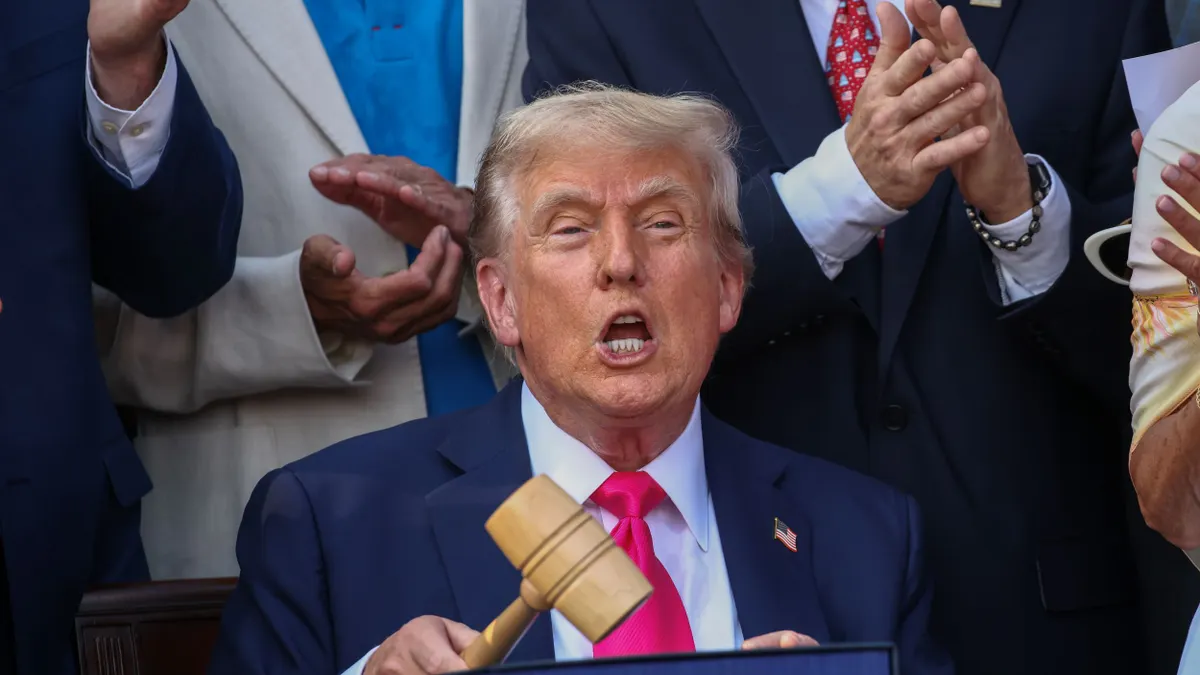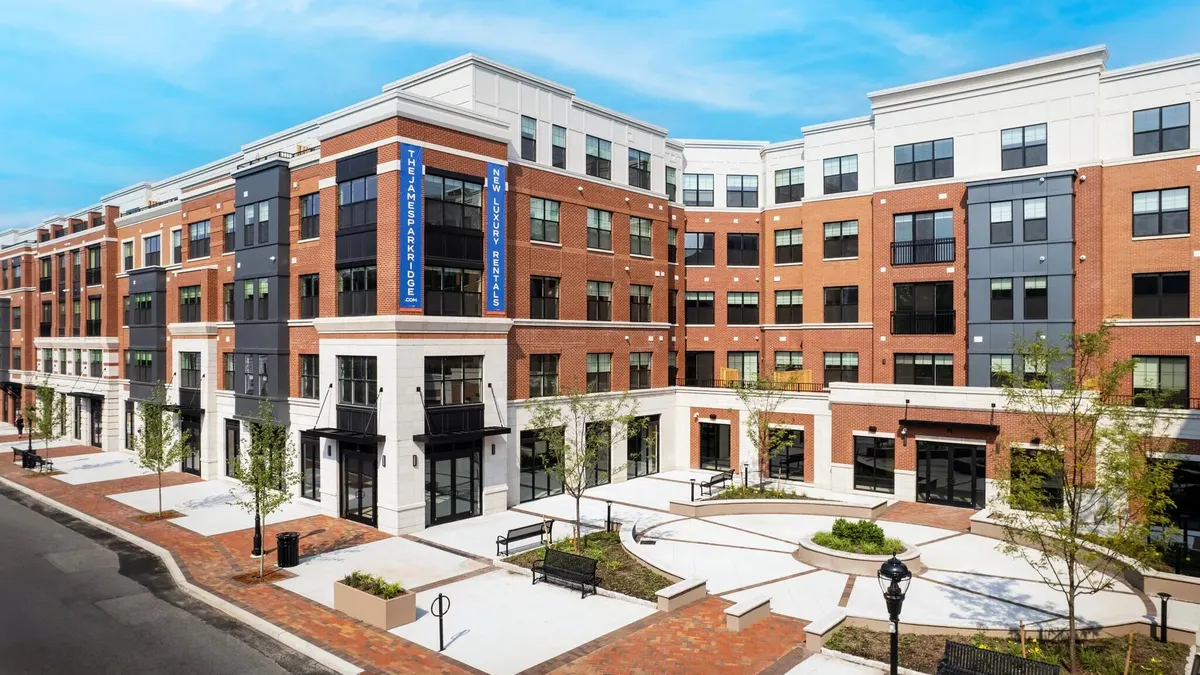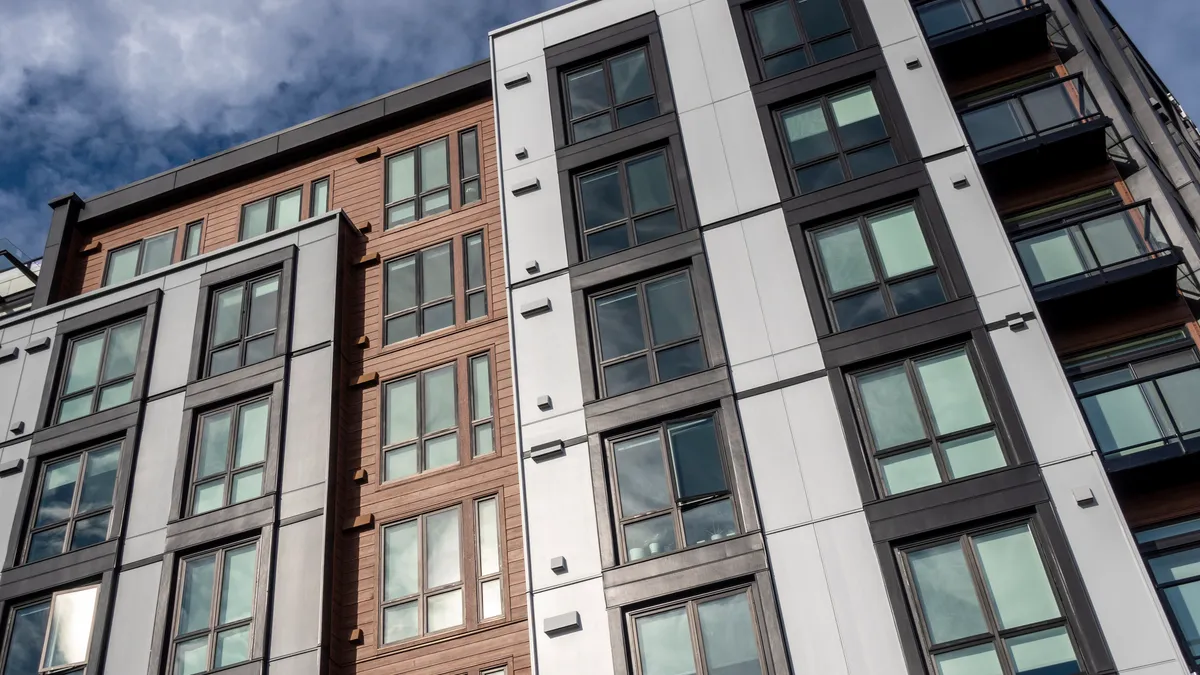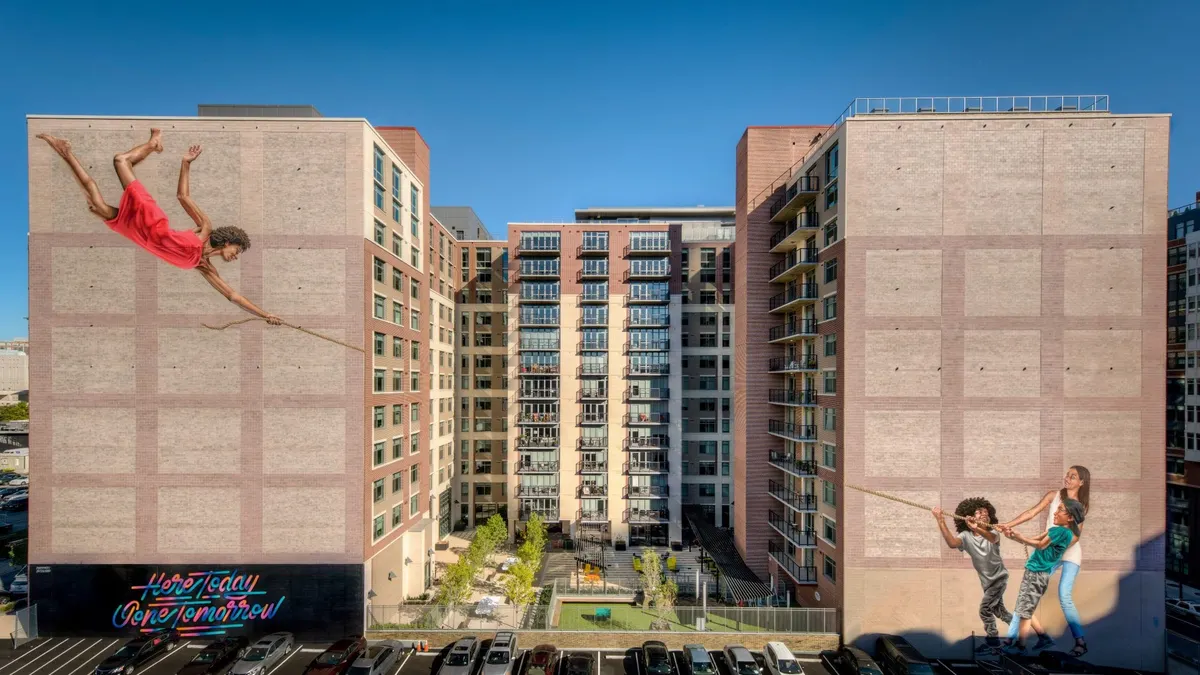Larry Jacobson began his real estate career like many who grew up in family companies — at the site level. While attending law school, he managed several properties for The Jacobson Co. in Los Angeles.
After school, Jacobson continued to work in the business as a real estate attorney at Buchalter. But he also explored other industries. He served as general manager and partner at Giant Records before its sale to AOL Time Warner and was second in command at Capitol Records. He still serves as the owner of Los Angeles-based talent management company World Audience.
After the death of his father, company founder Norman Jacobson, in 2012, he stepped into the position of president and CEO at the Los Angeles-based The Jacobson Co.
“When my father passed away and I took over the business in 2012, my vision was to buy us out of California and broaden the asset classes into student housing,” Jacobson told Multifamily Dive. “We've started adding a lot more investors. And not surprisingly, a lot of them are in the entertainment business — actors, actresses, recording artists, executives and lawyers in the entertainment space.”
After Jacobson took over the company, he pushed it into new areas like Colorado, Washington and Texas. Here, he talks with Multifamily Dive about properties he targets, risks in value add and upside-down pricing trends.
This interview has been edited for brevity and clarity.
MULTIFAMILY DIVE: What types of properties do you target? Is it typically value add?
LARRY JACOBSON: We buy value-add deals. So we'll do a relatively deep value add if it makes sense. For example, it could be an 80’s product where you have to upgrade the common areas and bring the units up to a spec that you think you can justify by the rent increases that you project.
We don't typically get involved in a super heavy lift. We have done those. There was a building in Newport Beach, California, where we wanted to take the units down to the studs. But, I would say that's the exception, not the rule.
Do you buy newer apartments?
We will buy newer products, what you might call a core plus, that is in a city center and hasn’t been operated to its fullest potential. We certainly will buy stabilized assets. But that's probably the thing we do the least. Even before interest rates went up, prices have been high and it's been hard to make deals work.

So having an opportunity to make improvements physically or operationally actually generates the returns that you need. Depending upon your financing structure, it might help you to refinance and return some capital to your investors.
How hard is it to find 80’s-era assets that haven’t been renovated?
I definitely think you could find them. I think a more common thing is you will find an asset that has been renovated at some point — it could have been a decade or more ago. Maybe somebody renovated it a decade-plus ago and now it's time to do it again.
You also see real estate being dolled up for trade. So a group will buy a building and renovate a portion of it without ever having the intention of doing the whole thing. So their model is to hold onto it for three-plus years, and they're going to do some renovation. It could be a percentage of the units, leaving the rest of what we call meat on the bone for a prospective value-add buyer. Some groups will approach the common area and do some heavy lifts — roofing, siding and maybe the clubhouse. Then they’ll leave the units to a prospective buyer.
Has value-add become too risky in some cases?
I think the problem that you face is that it's a matter of pricing. When you think about why you should be able to make more money in theory or higher returns on a value add as opposed to a stabilized asset, it's just about risk. It's about execution risk. You're hopefully making very educated and refined guesses as to what rents you can get if you do these renovations. But a lot of things can happen.
First of all, you can be wrong. So there's execution risk. I don't think that happens to us. I think we're reasonably good at it, and we're not the only ones.
But you could run into another situation like we had with COVID. We had some value-add assets that we bought in 2018 and 2019. We were either in the middle or just about to get underway on our value-add plan and then all of a sudden here is COVID. Now, we are not exceeding our value-add plan.
No. 1, we wanted to preserve our reserves, just in case. Nobody knew where things were going to go with these shutdowns. That didn't turn out to be necessary, but we didn't know at the time. And then the other thing was, you weren't going to get the higher rents because, depending on the market, you couldn't raise rents. People didn't have jobs. So we stopped.
Had prices gotten so high earlier this year that taking those risks didn’t make sense anymore?
There are times when the pricing on value-add assets is so high that you're paying the seller for the risk you’re taking. And that has been a challenge. For example, we saw a deal in downtown Denver where we thought the price per door was better than the 80’s and 90’s stuff we were seeing. We were going to pay a lower price per door for a newer asset in the central business district compared to a suburban 90’s asset that we were also looking at.
Click here to sign up to receive multifamily and apartment news like this article in your inbox every weekday



